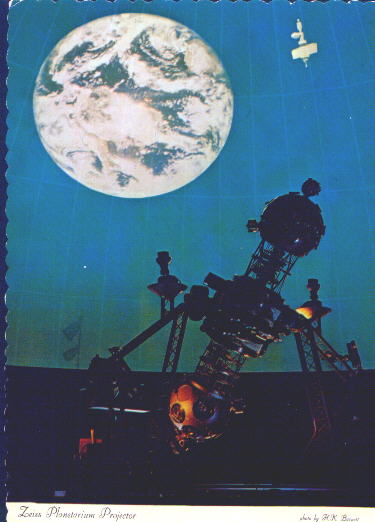
By Glenn A. Walsh
Reporting for SpaceWatchtower
While this week the American Northeast and Midwest regions have been under the grip of near-zero, and in some cases sub-zero, temperatures (Fahrenheit), along with many inches of snowfall, it may seem ironic that this morning the Earth reaches the closest approach to the Sun. The Earth reaches the point in is orbit of the Sun called perihelion on Saturday morning, 2014 January 4 at 6:59 a.m. EST (11:59 Coordinated Universal Time).
At that time, Earth will be closer to the Sun that at any other time in the year: 0.98329 Astronomical Units (one Astronomical Unit equals the average distance between the Sun and Earth, approximately 93,000,000 miles). In kilometers the distance is 147,104,781, which is about 91,402,500 miles. Each year, Earth perihelion occurs during the first few days of the New Year.
Earth's orbit around the Sun is not circular but elliptical, with one point in the orbit closest to the Sun (called perihelion) and one point farthest from the Sun (called aphelion). Earth reaches the farthest point in its orbit around the Sun on or around July 3 each year. In 2014, Earth reaches aphelion on Thursday evening, July 3 at 8:13 p.m. EDT (July 4, 0:13 Coordinated Universal Time), at a distance of 152,093,481 kilometers from the Sun.
Likewise, the Moon's orbit around the Earth has one point closest to the Earth each month (called perigee) and one point farthest from the Earth each month (called apogee). One lunar orbit around the Earth actually takes a little less than one month's time: 27.322 days.
As January has 31 days and one lunar orbit occurs about every 27 days, this month is a little unusual as there are two lunar perigees in January. The first perigee occurred at the very beginning of the month on New Year's Day at 4:00 p.m. EST (21:00 Coordinated Universal Time), while the second perigee occurs on Thursday, January 30 at 5:00 a.m. EST (10:00 Coordinated Universal Time).
On New Year's Day, the Moon was 356,923 kilometers from the Earth. On January 30 the Moon will be 357,080 kilometers. Although the distances are similar, they are rarely the same, month-to-month.
Likewise, Earth perihelions are not the same from one year to another. This year, the perihelion distance is 147,104,781 kilometers, while last year's perihelion distance (on Wednesday, January 2 at 12:00 Midnight EST - 5:00 Coordinated Universal Time) was 147,098,161 kilometers.
This month, larger than usual tides on the ocean coasts are predicted at the times of both lunar perigees. This is due to the fact that both perigees, on New Year's Day and on January 30, occur within a half-day of the Moon phase of New Moon. New Moon on New Year's Day (which was Lunation number 1126) occurred at 6:14 a.m. EST (11:14 Coordinated Universal Time), while New Moon will occur on January 30 (which will be Lunation number 1127) at 4:38 p.m. EST (21:38 Coordinated Universal Time).
Lunar apogee occurs this month on Wednesday, January 15 at 9:00 p.m. EST (January 16, 2:00 Coordinated Universal Time), when the Moon will be 406,532 kilometers from the Earth. The Moon phase of Full Moon (Wolfe Moon) that very same evening, at 11:52 p.m. EST (January 16, 4:52 Coordinated Universal Time), results in the January Full Moon being the smallest Full Moon in 2014. Since Full Moon occurs so close to the Moon's farthest point in its orbit from the Earth (most of the time, Full Moon does not occur so far from Earth), the Moon will look slightly smaller in the middle of January.
More on Perihelion and Aphelion:
Link >>> http://en.wikipedia.org/wiki/Perihelion#Perihelion_and_aphelion_of_the_Earth
Source: Glenn A. Walsh Reporting for SpaceWatchtower, a project of Friends of the Zeiss.
2014: 75th Year of Pittsburgh's Buhl Planetarium

Want to receive SpaceWatchtower blog posts in your inbox ?
Send request to < spacewatchtower@planetarium.cc >..
gaw
Glenn A. Walsh, Project Director,
Friends of the Zeiss < http://buhlplanetarium.tripod.com/fotz/ >
Electronic Mail - < gawalsh@planetarium.cc >
About the SpaceWatchtower Editor/Author: < http://buhlplanetarium.tripod.com/#GAW >
SpaceWatchtower Blog: < http://spacewatchtower.blogspot.com/ >
Also see: South Hills Backyard Astronomers Blog: < http://shbastronomers.blogspot.com/ >
Barnestormin: Writing, Essays, Pgh. News, & More: < http://www.barnestormin.blogspot.com/ >
SPACE & SCIENCE NEWS, ASTRONOMICAL CALENDAR:
< http://buhlplanetarium.tripod.
Twitter: < https://twitter.com/spacewatchtower >
Facebook: < http://www.facebook.com/pages/
Author of History Web Sites on the Internet --
* Buhl Planetarium, Pittsburgh:
< http://www.planetarium.
* Adler Planetarium, Chicago:
< http://adlerplanetarium.
* Astronomer, Educator, Optician John A. Brashear:
< http://johnbrashear.tripod.com >
* Andrew Carnegie & Carnegie Libraries:
< http://www.andrewcarnegie.
* Civil War Museum of Andrew Carnegie Free Library:
< http://garespypost.tripod.com >
* Duquesne Incline cable-car railway, Pittsburgh:
< http://inclinedplane.tripod.
* Public Transit:
< http://andrewcarnegie2.tripod.
No comments:
Post a Comment